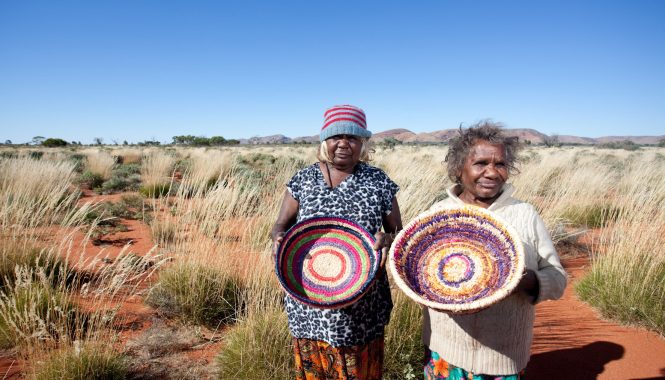
Tjanpi Desert Weavers is a not-for-profit social enterprise within the Ngaanyatjarra Pitjantjatjara Yankunytjatjara (NPY) Women’s Council that supports over 400 artists from 28 remote communities across the NPY region of Australia. It was established in 1995 out of a need for meaningful and culturally appropriate employment, and to enable women to earn a regular income from selling their fibre art. Tjanpi (meaning ‘grass’) supports the production and marketing of spectacular contemporary fibre artworks that use native grasses and coil weaving techniques. Working with fibre in this way has since become a fundamental part of Central and Western desert cultures.
The NPY lands cover approximately 350,000 square kilometres across the tri-state (WA, SA, NT) border region of Central Australia (please see the map below) and Tjanpi field officers regularly traverse this area to visit each community. On these trips, field officers purchase artworks from artists, supply art materials, hold skills development workshops, and facilitate grass-collecting. While out collecting grass, women are also able to spend time on Country and maintain their culture through gathering food, hunting, performing inma (cultural song and dance), and teaching their children.
Tjanpi artists use native grasses to make spectacular contemporary fibre art, weaving beautiful baskets and sculptures and displaying endless creativity and inventiveness. Originally developing from the traditional practice of making manguri rings, working with fibre in this way has become a fundamental part of Central and Western desert culture.
Tjanpi embodies the energies and rhythms of Country, culture and community. The shared stories, skills and experiences of this wide-reaching network of mothers, daughters, aunties, sisters and grandmothers form the bloodline of the desert weaving phenomenon and have fuelled Tjanpi’s rich history of collaborative practice.
Tjanpi has a public gallery in Alice Springs showcasing baskets, sculptures, jewellery, books, merchandise and more, while Tjanpi artworks are also found at stockists around the country and overseas. Tjanpi regularly exhibits work in national galleries and facilitates commissions for public institutions.
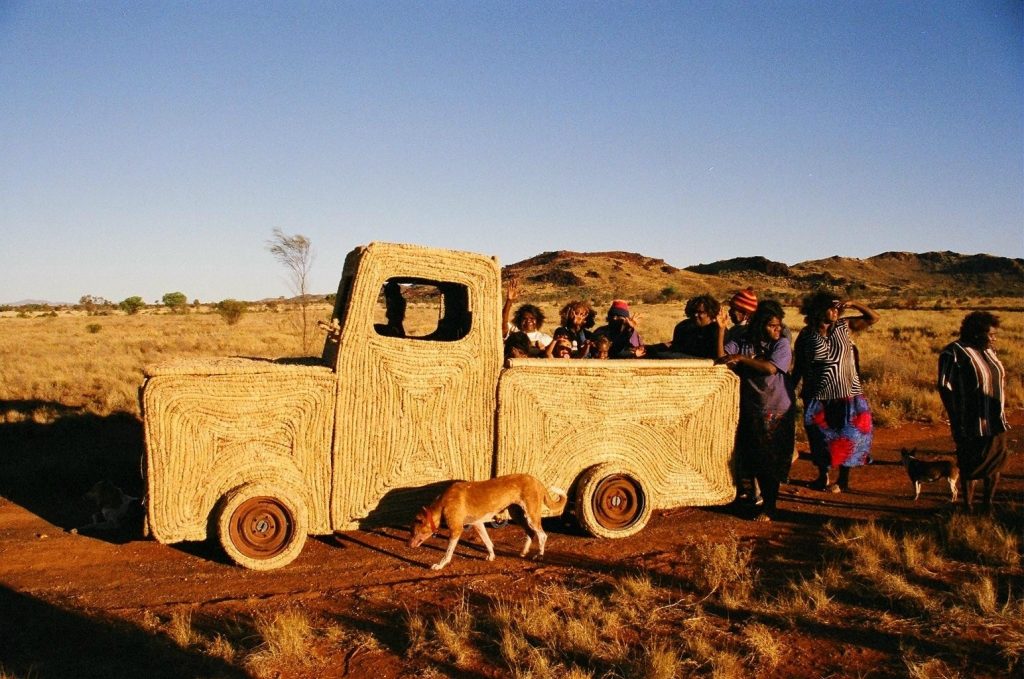 Tjanpi Toyota, 2005, Tjanpi weavers from Papulankutja, WA (Blackstone Community) – Image by Thisbe Purich © Tjanpi Desert Weavers, NPY Women’s Council.
Tjanpi Toyota, 2005, Tjanpi weavers from Papulankutja, WA (Blackstone Community) – Image by Thisbe Purich © Tjanpi Desert Weavers, NPY Women’s Council.
Women from the remote community of Papulankutja (Blackstone) in Western Australia were the first Tjanpi weavers to tackle to subject of the car through the fibre art medium. Tjanpi Toyota (2005) is a remarkable life-sized Toyota that celebrates the beloved Troopcarrier; a robust, four-wheel drive vehicle which seats 11 passengers and is therefore essential when going “out bush”. In 2005 the work was awarded the major prize at the National Aboriginal and Torres Strait Islander Art Award, a highly anticipated First Nations award held annually at Darwin’s Museum and Art Gallery of the Northern Territory.
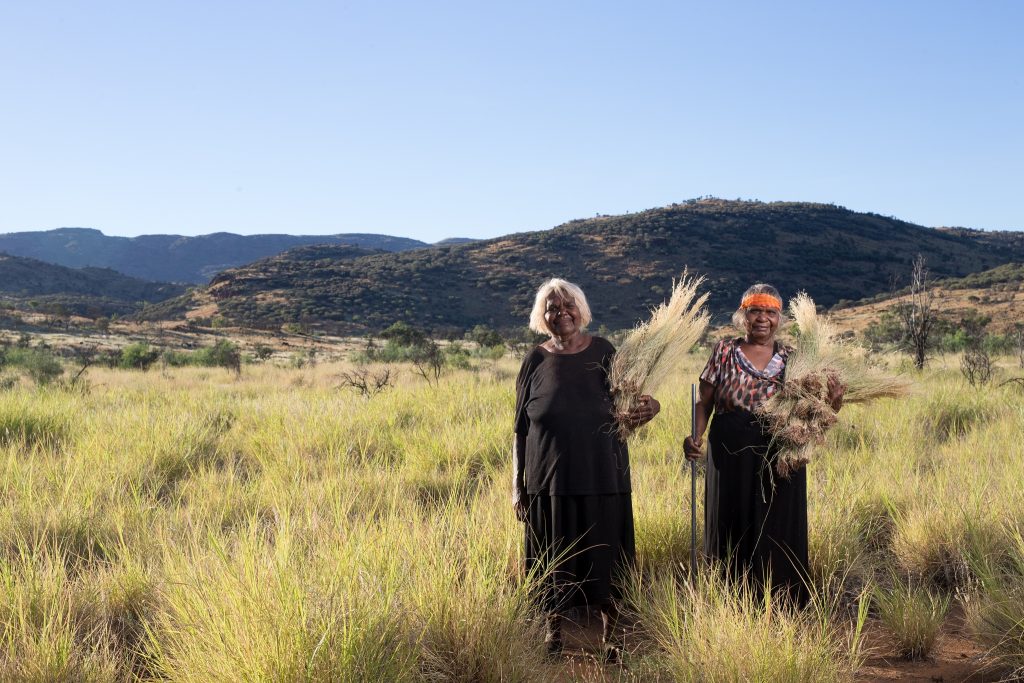 Naomi Kantjuri and Maringka Burton, collecting tjanpi near Amata – Image by Rhett Hammerton, Courtesy Tjnapi Desert Weavers.
Naomi Kantjuri and Maringka Burton, collecting tjanpi near Amata – Image by Rhett Hammerton, Courtesy Tjnapi Desert Weavers.
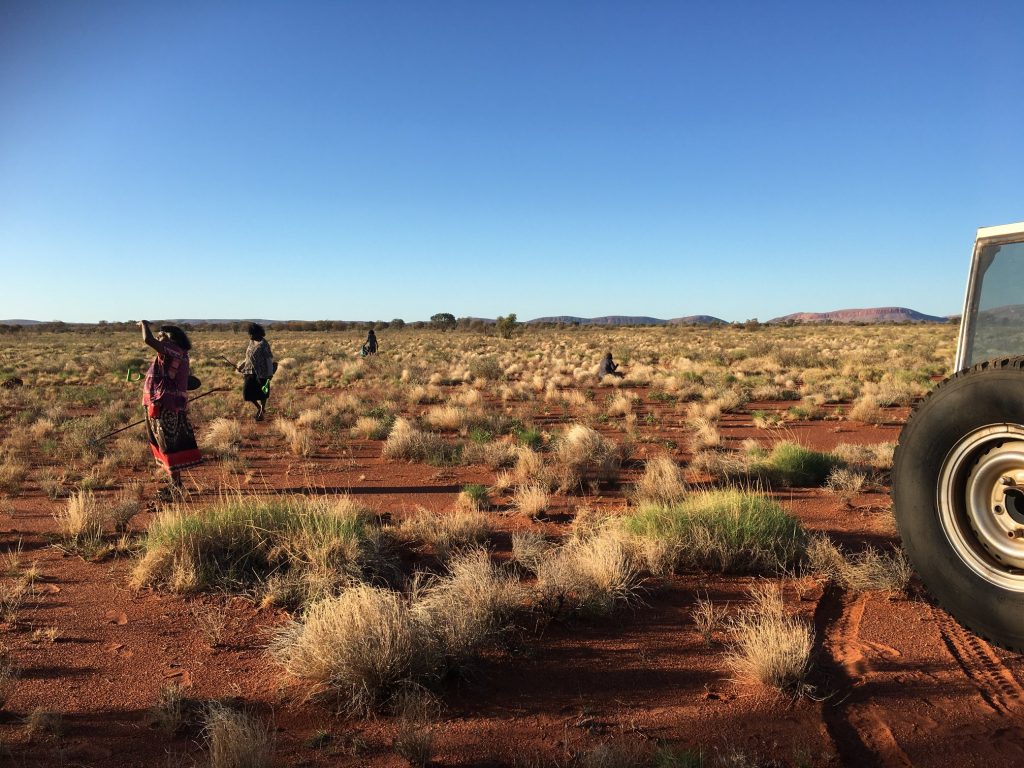 The Warakurna ladies collecting grass – Image Courtesy Tjanpi Desert Weavers.
The Warakurna ladies collecting grass – Image Courtesy Tjanpi Desert Weavers.
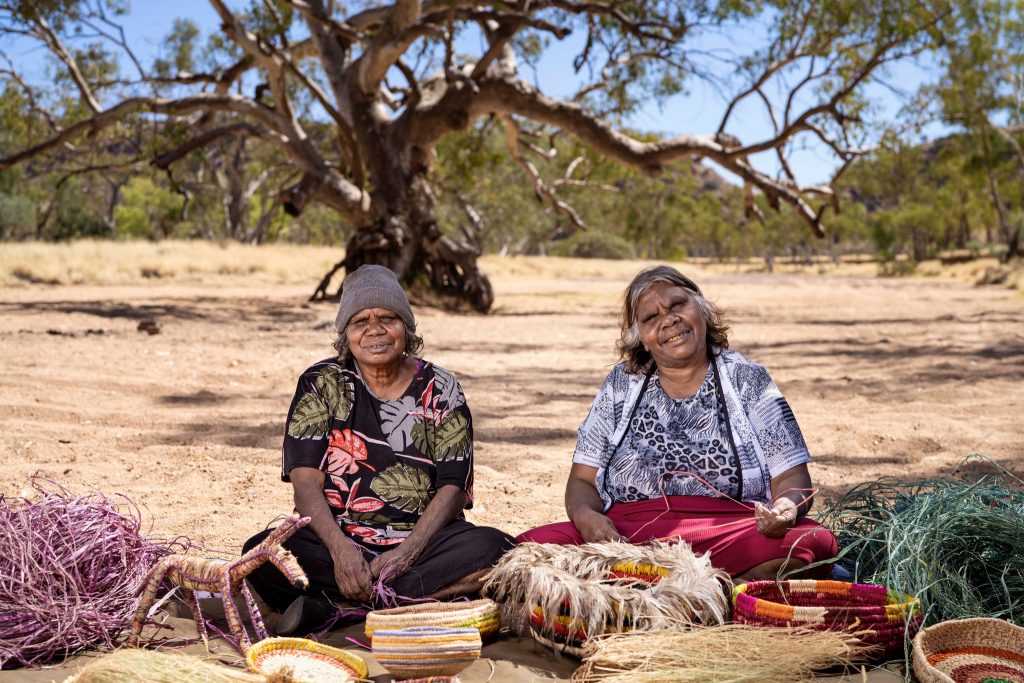 Pinuka (Margaret) Yai Yai and Julie Yangki – Image Shaana McNaught, Courtesy Tjanpi Desert Weavers.
Pinuka (Margaret) Yai Yai and Julie Yangki – Image Shaana McNaught, Courtesy Tjanpi Desert Weavers.
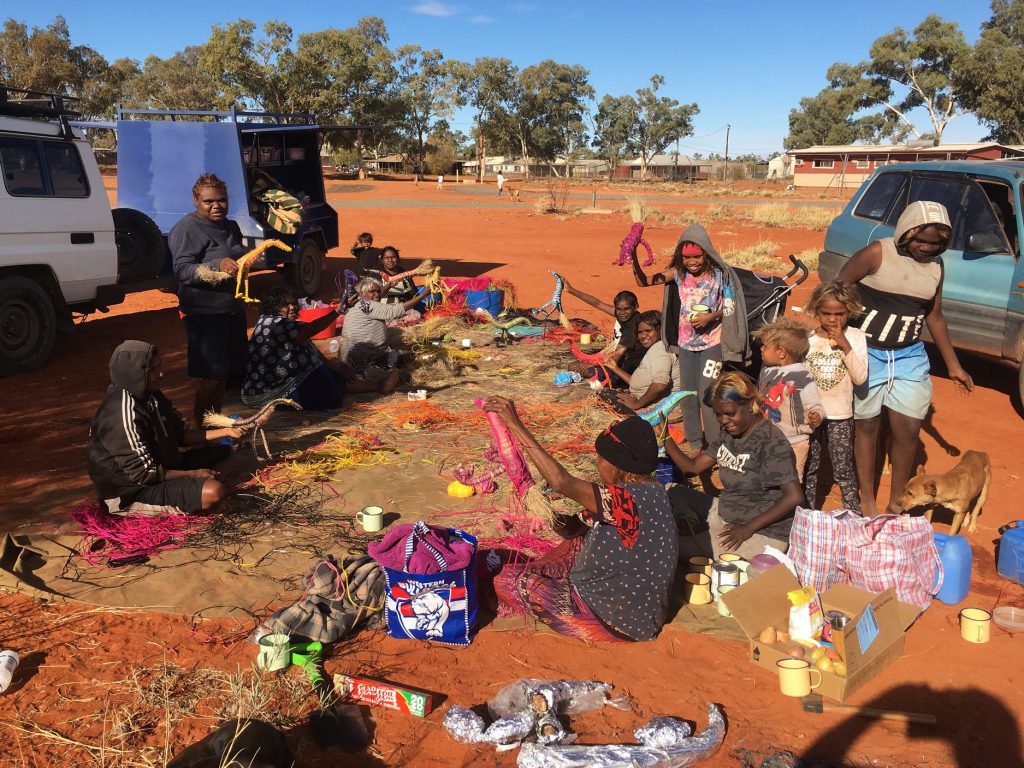 Inter-generational Tjanpi weaving workshop in Kaltjiti, SA – Image Ananda, Courtesy Tjanpi Desert Weavers.
Inter-generational Tjanpi weaving workshop in Kaltjiti, SA – Image Ananda, Courtesy Tjanpi Desert Weavers.
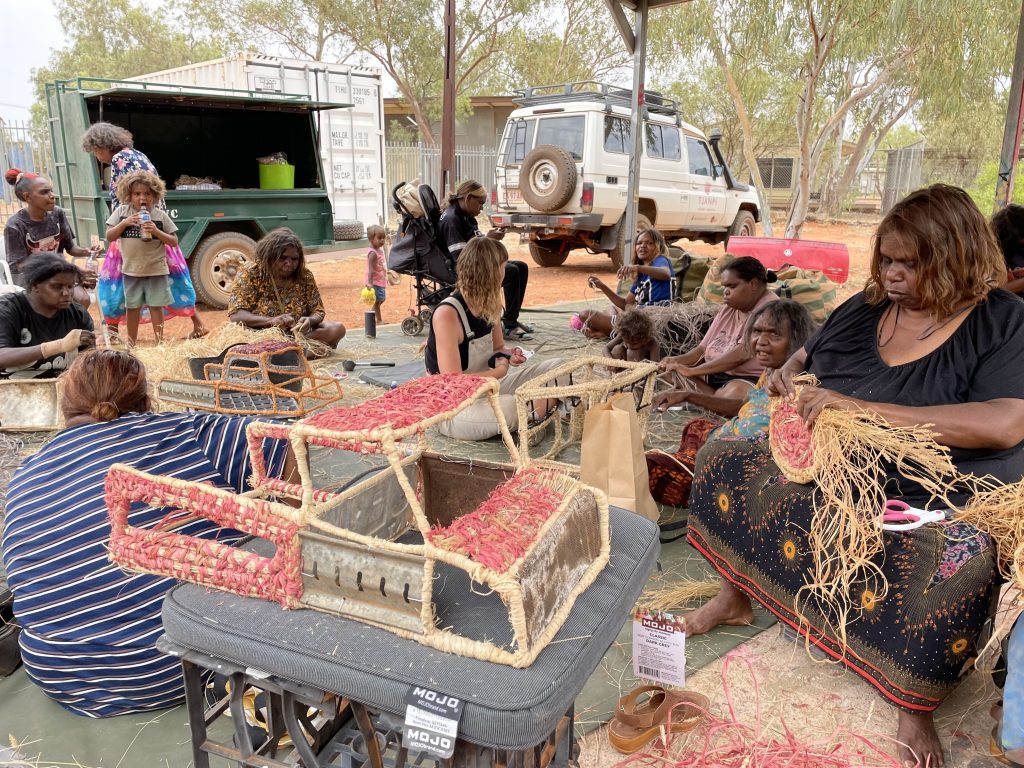 Workshop outside Tjarlirli Art Centre in Kaltukatjara (Docker River) – Image by Em Frank, Courtesy Tjanpi Desert Weavers.
Workshop outside Tjarlirli Art Centre in Kaltukatjara (Docker River) – Image by Em Frank, Courtesy Tjanpi Desert Weavers.
During a 2023 workshop in Kaltukatjara (Docker River), NT, three artists created mechanical cars that were selected to be part of the 7th FITE – Biennale Textile in Clermont-Ferrand, France in 2024.
SOURCE: Tjanpi Desert Weavers.